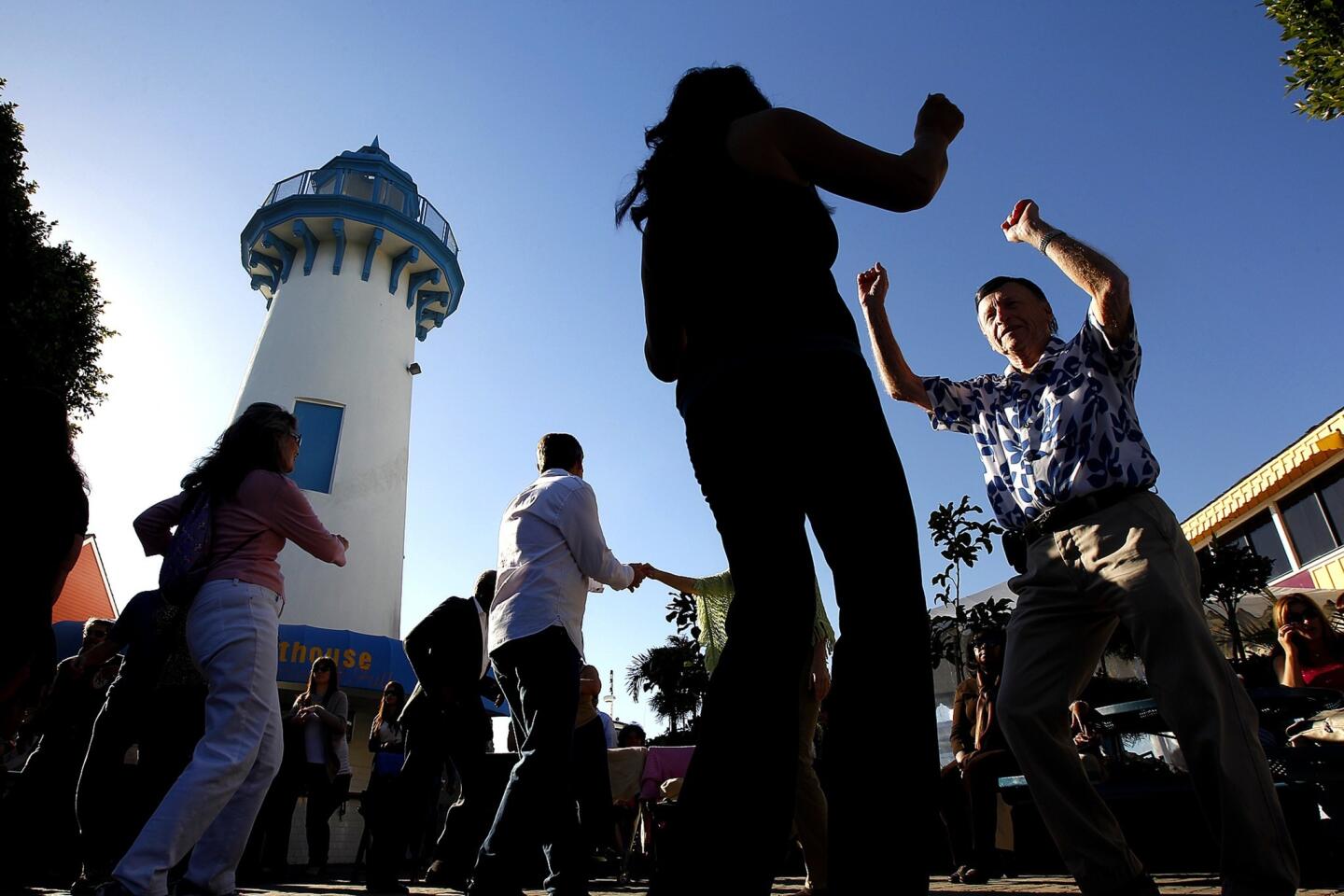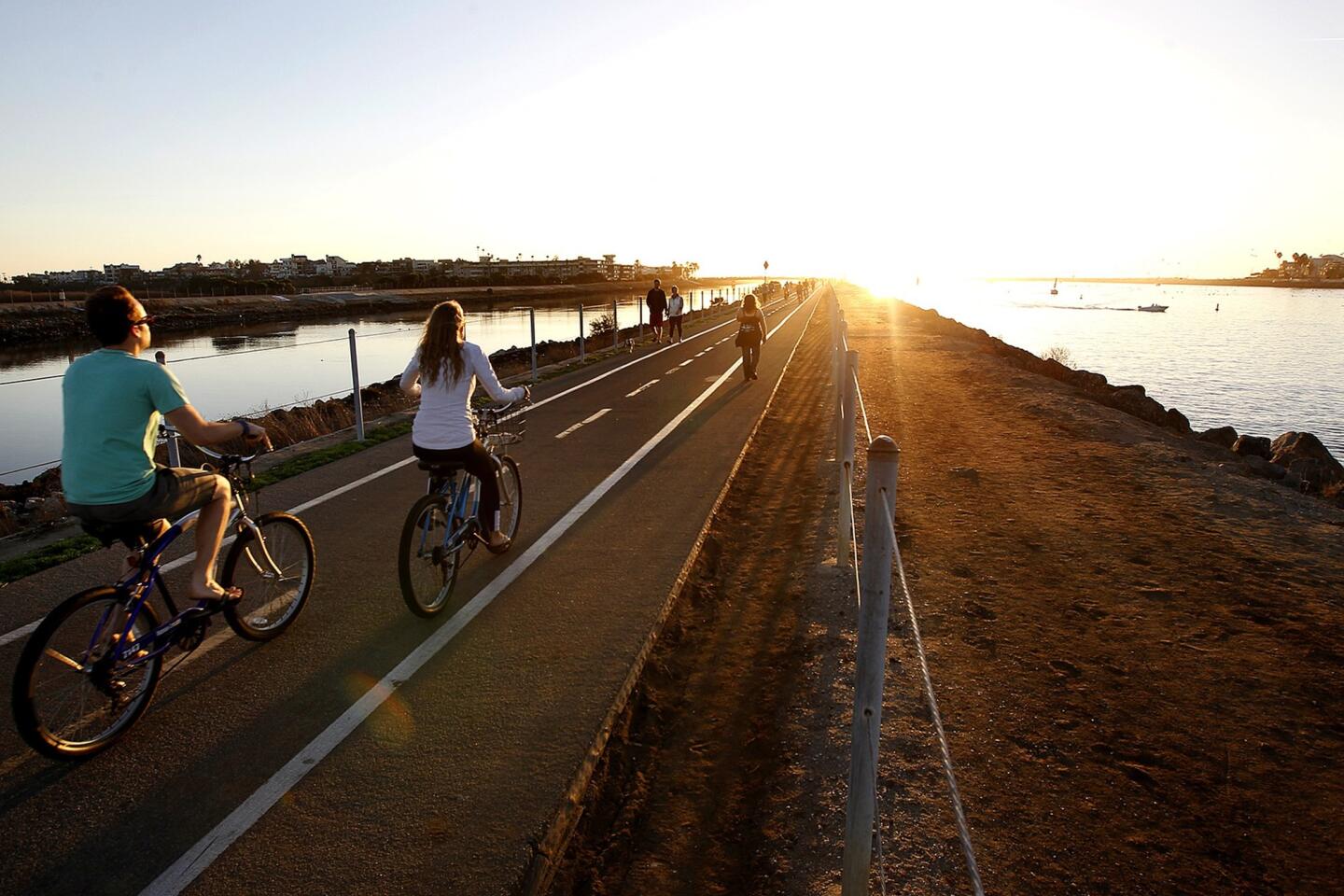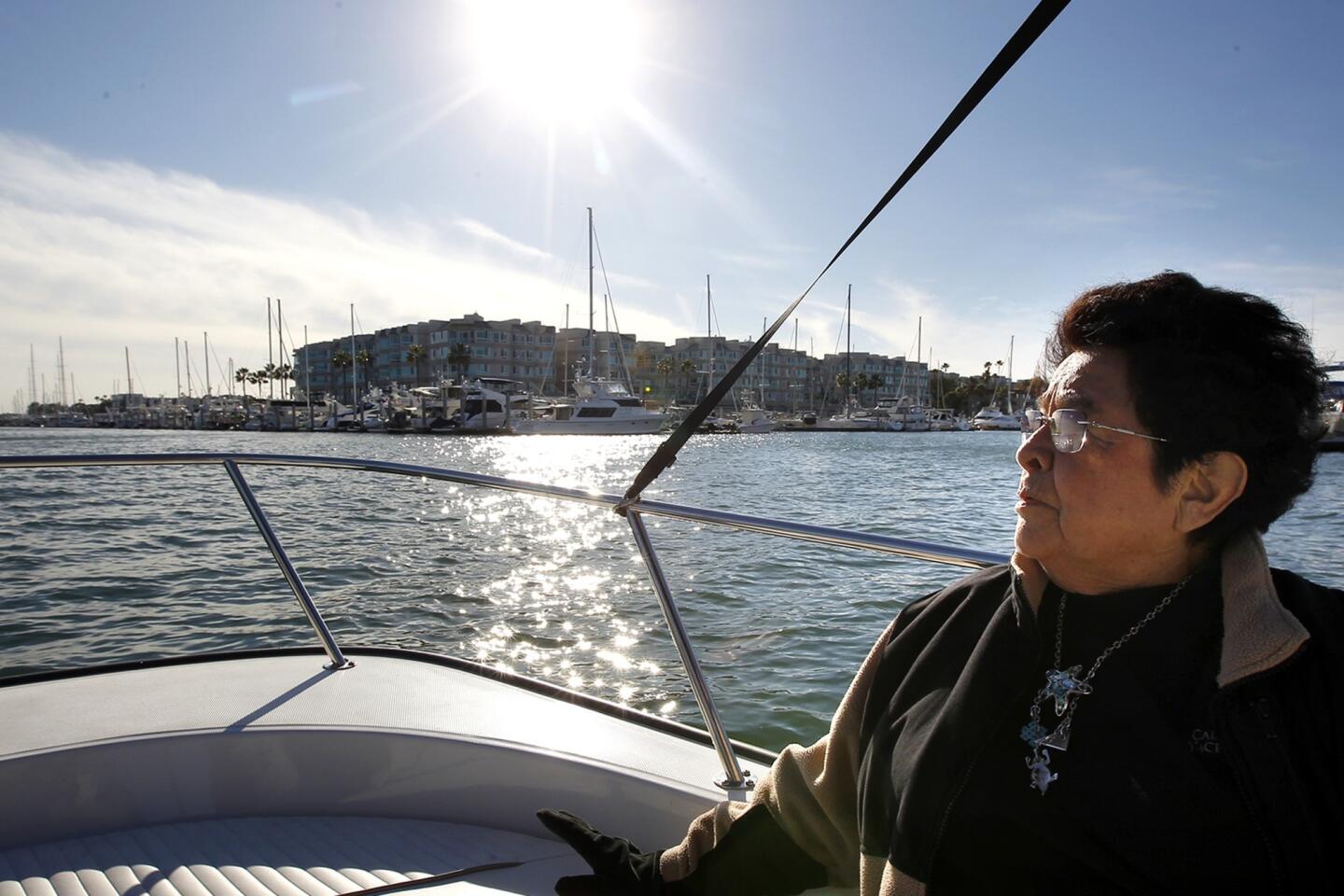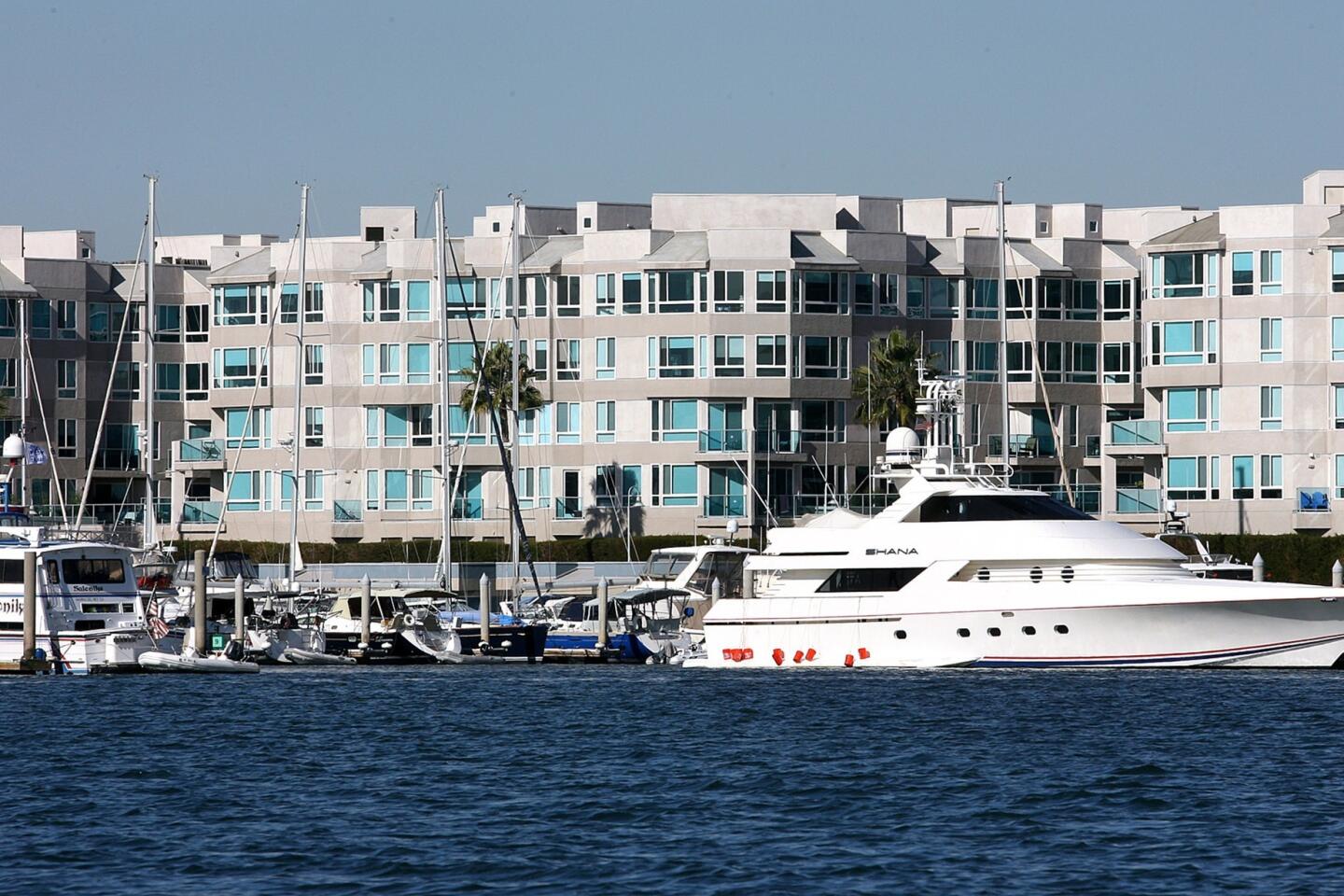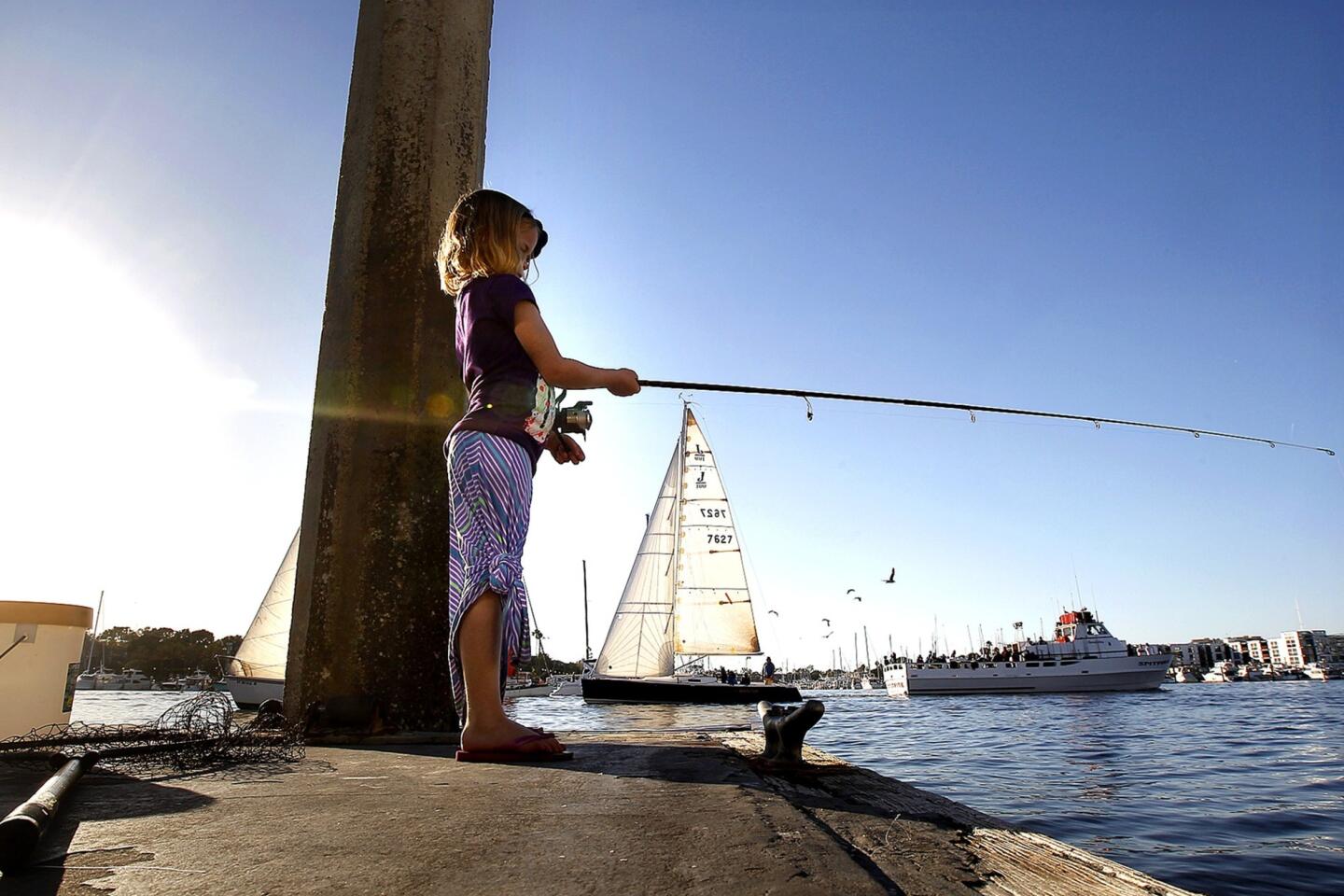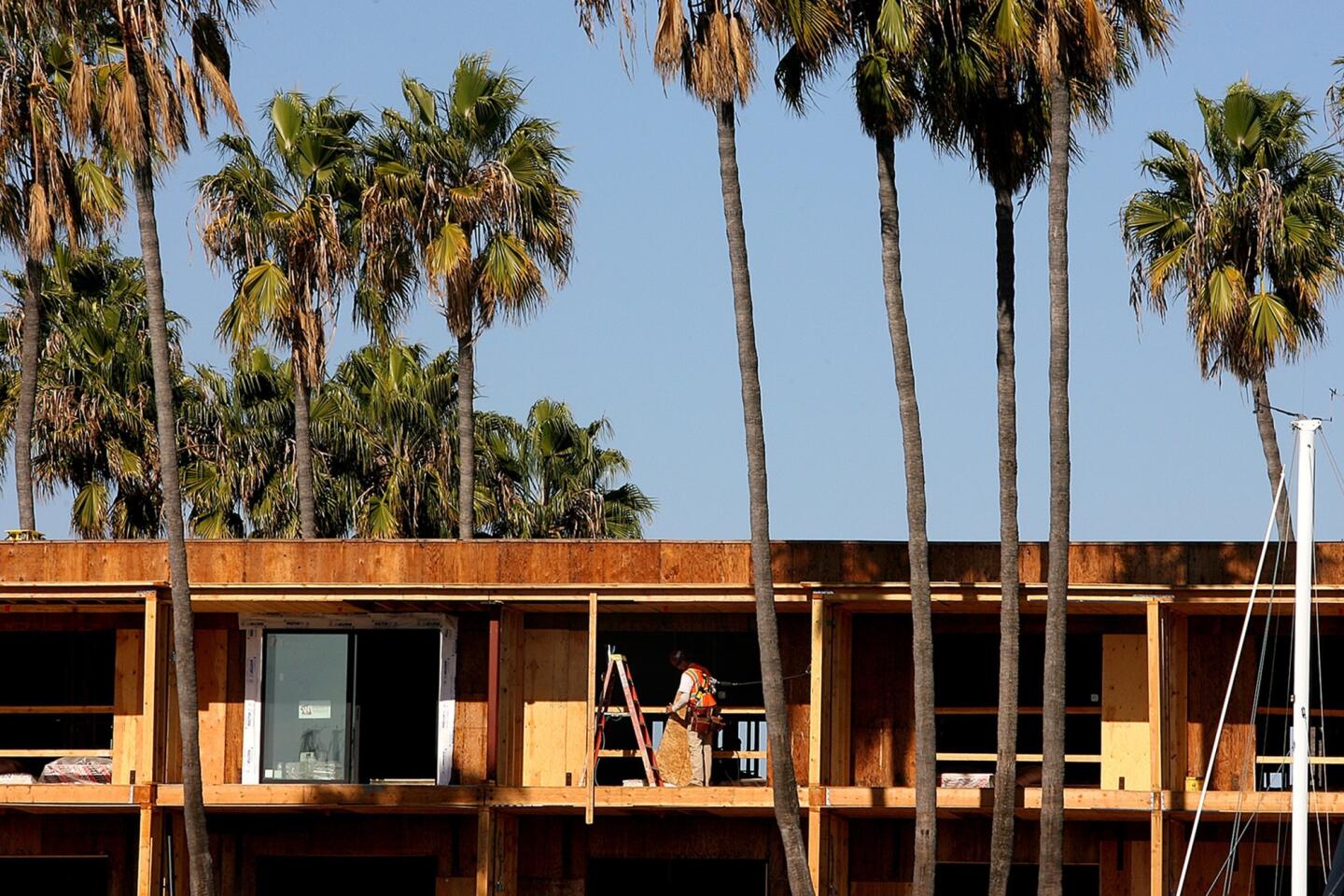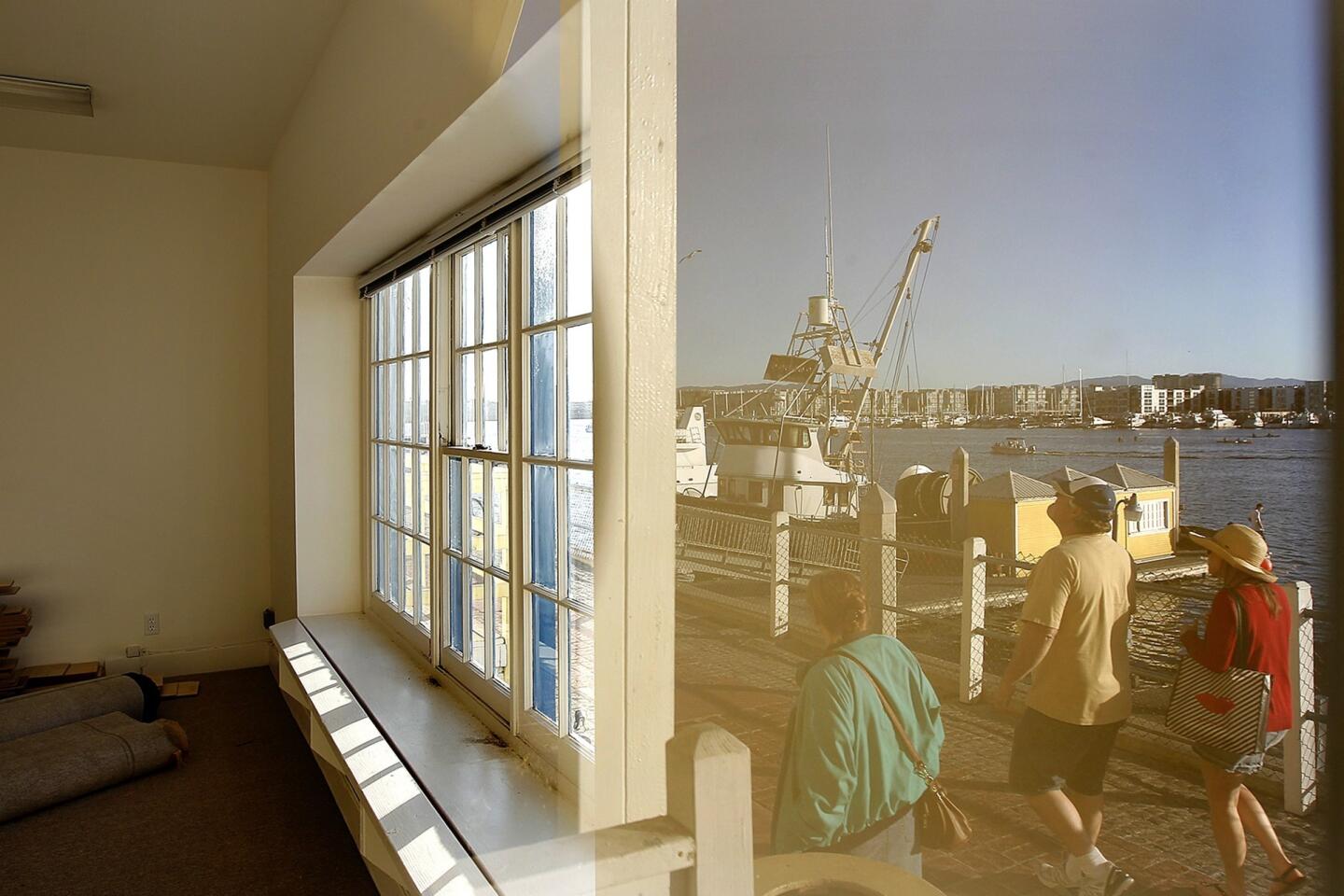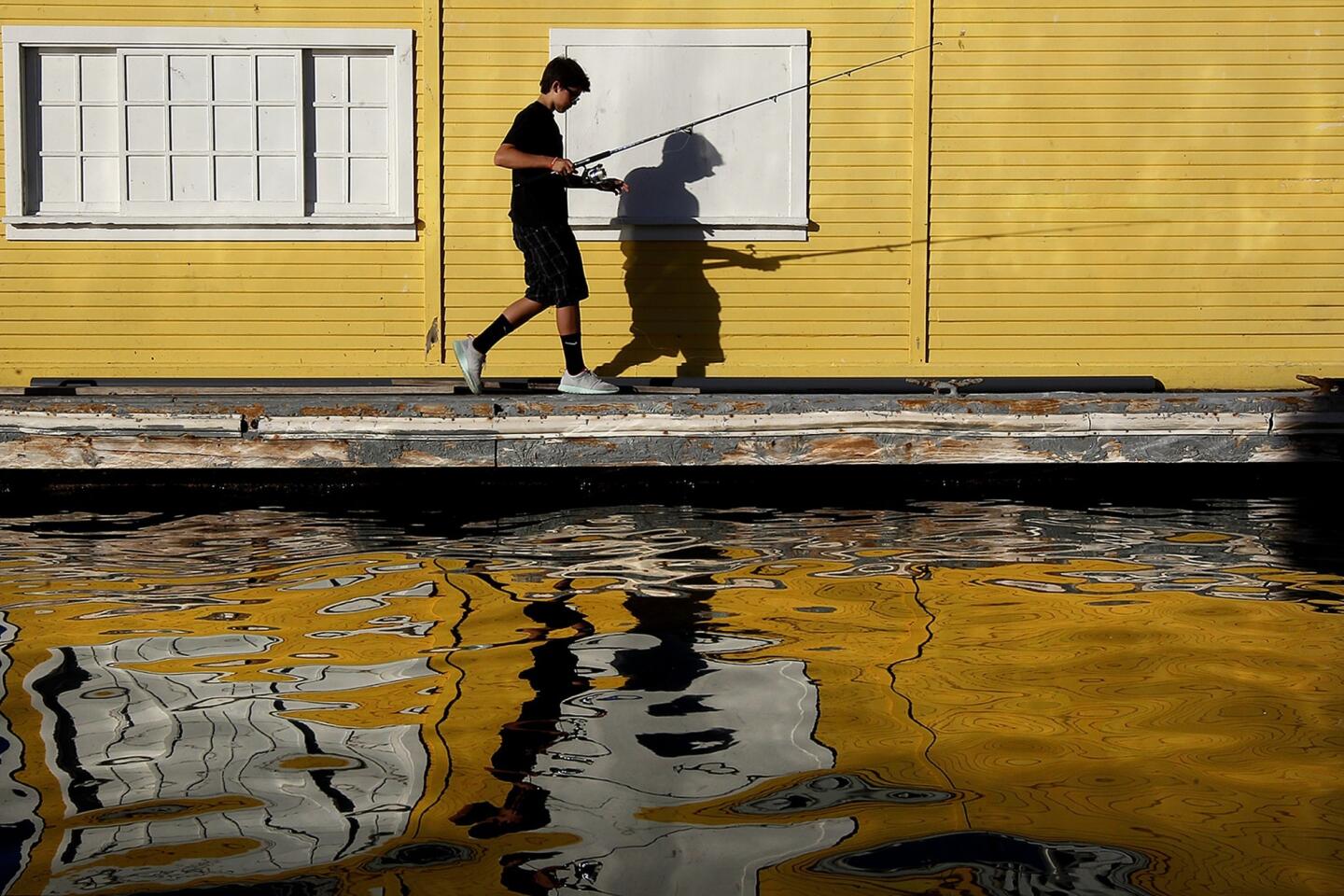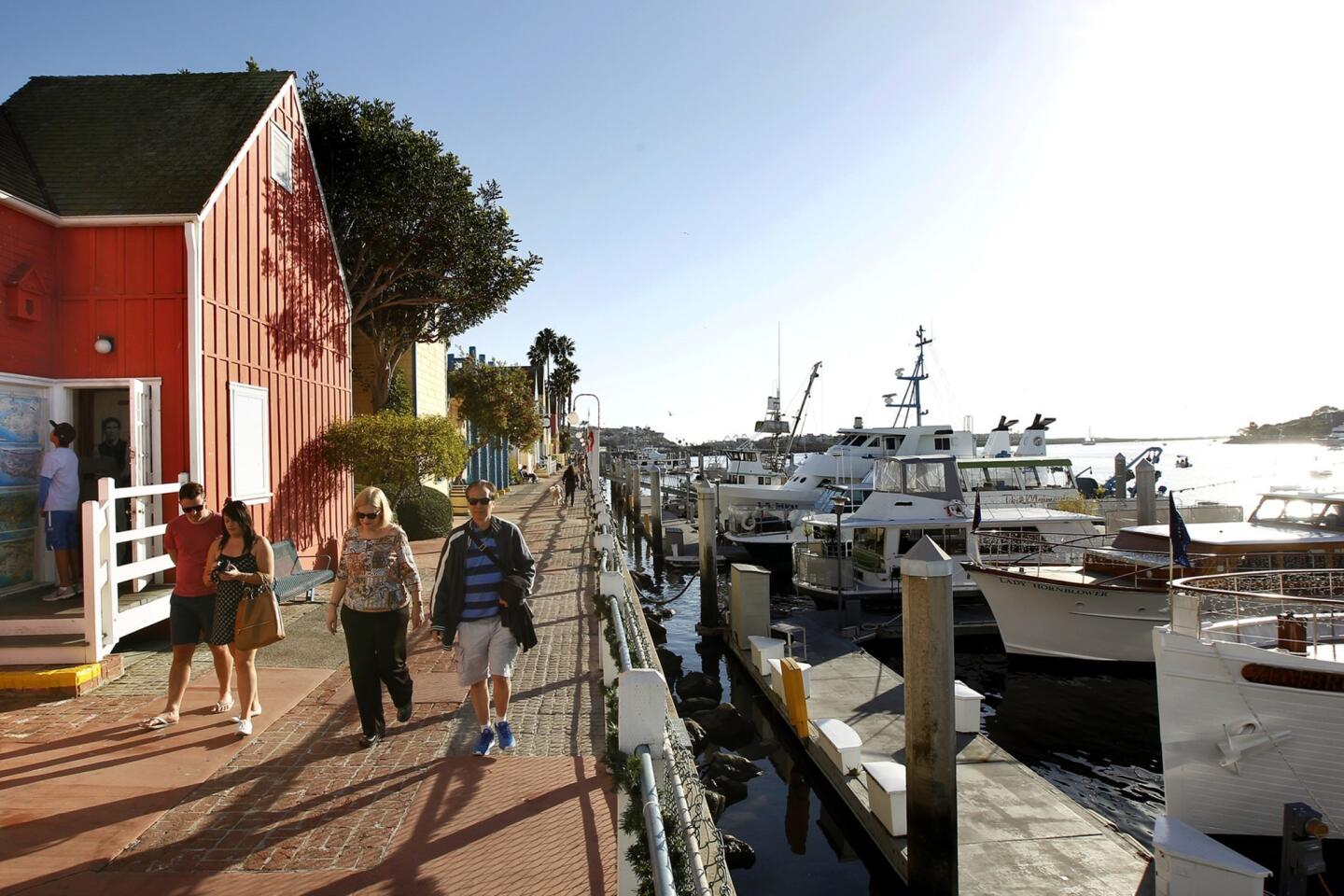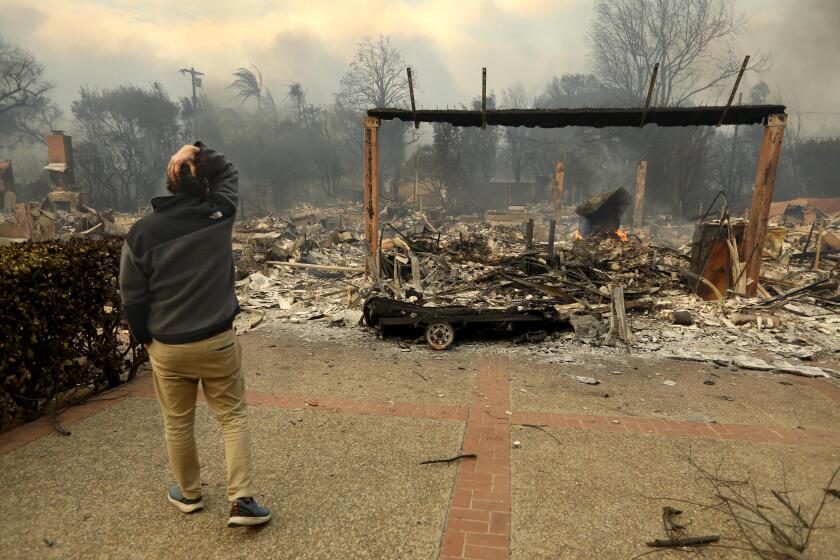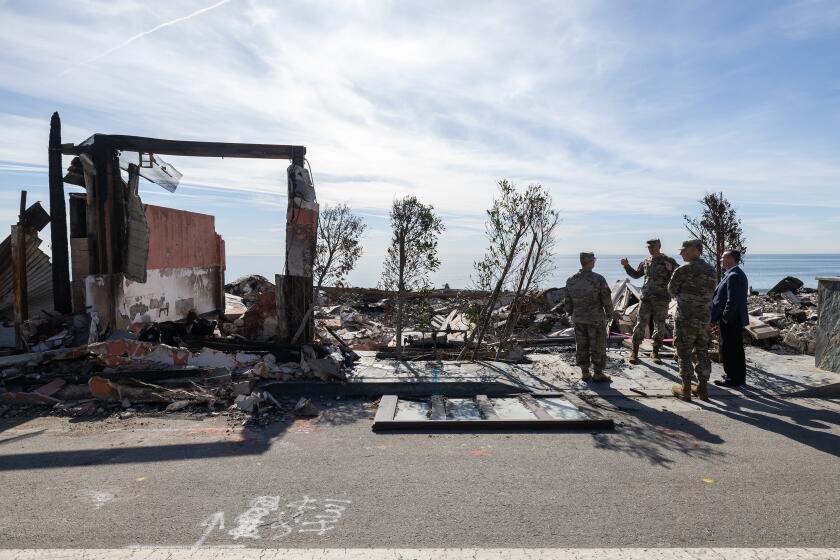Dated Marina del Rey to get a modern makeover
- Share via
On a recent weekday morning, a Starline tour bus swung open its doors at Fisherman’s Village in Marina del Rey, and Australian tourists Laura Ross and Kate Lund surveyed the scene.
The faux maritime shopping center — with eateries and gift shops built around a fake lighthouse — was mostly empty. Many of the trinket shops were barren, their windows dusty, the walls ripped out. The ocean air had long ago turned vibrant red, yellow and turquoise paint to pastels on the dilapidated wooden buildings.
“It’s dead,” Ross declared. “This is pretty unexciting.”
The decline of Fisherman’s Village underscores a growing generation gap along the shores of Marina del Rey. Sections of the marina are booming, thanks to an influx of upscale residential and commercial projects over the last decade. But other sections remain trapped in a time warp, hearkening back to an earlier era when kitschy nautical and Polynesian themes were in vogue.
Now county planners are pushing to modernize the marina and make it relevant once more.
There are plans for a new yacht club facility. As for Fisherman’s Village, a developer wants to tear most of it down and build a luxury hotel, a performance plaza and a 28-foot-wide promenade.
The county this month unveiled a much more ambitious blueprint that would divide Marina del Rey into distinct districts.
One area, on the northeast end, would focus on visitors and tourists with new nightclubs and restaurants. The design emphasizes second-story and rooftop public spaces with views of the water. A new civic center on the site now occupied by the library would consolidate the visitor’s center, harbor administration offices and library into one central building.
The overarching goal is to make the marina more walkable, especially along the water. The marina is now dotted by large parking lots and it’s difficult to walk the perimeter of the waterway. Officials want to widen existing promenades and look for ways to better connect the area’s various walkways along the water.
“I call it the crown jewel of L.A. County that really needs polishing,” county Supervisor Don Knabe said. ‘The ultimate goal has always been … to have a boardwalk entirely around the water.”
::
When the U.S. Army Corps of Engineers opened the nation’s largest man-made recreational boating harbor in the 1960s, Marina del Rey was known for its wide-open spaces and casual California atmosphere.
The first generation of residents was almost all boaters. Local historian Willie Hjorth arrived in Marina del Rey in 1963 and raised her family on a boat, the Hiolani, for little expense. She managed to get milk delivered to the Hiolani and school buses to pick up her kids at Tahiti Marina. There were a few restaurants and hotels, but the focus of the marina was on boats, not apartment units, she said.
Beginning in the 1970s, developers took note of the picturesque location. Towers began rising around the water, followed by denser apartment complexes and ritzier hotels. Then condos arrived in the 1980s and Marina del Rey became famous as a hub for the L.A. singles scene — mostly men in their 30s and 40s who came for the trendy bars and restaurants.
“It was modern, it was on the water, it was easily accessible, and there wasn’t a whole lot else around,” said Richard J. Bruckner, the county’s regional planning director. “At its peak, this was the place to go.”
The vibe began to shift in the 1990s as the marina’s population grew older, buildings began showing their wear, and nautical themes lost their cool.
At the same time, Marina del Rey’s reputation as a tourist destination and a weekend hot spot for locals was waning. And as the marina aged, the redesigned Third Street Promenade in Santa Monica and later Abbot Kinney Boulevard in Venice stole visitors away.
The more Marina del Rey faded as a destination, the more it evolved into a neighborhood. A residential district that was developed as high-rise apartment complexes filled in the west side of town.
Over the last 15 years, many of those complexes have undergone significant redevelopment that has taken the area upscale. Esprit Apartments reopened recently with chic windows made of turquoise glass, a public promenade and more than 100 additional units. The Shores reopened last year with 342 more units and rents that start around $2,500 for a one-bedroom apartment.
Parking is packed at the renovated Waterside, Marina del Rey, a shopping plaza redeveloped by Rick Caruso that features a cocktail-themed blow-dry salon and hip eateries like Mendocino Farms and the Counter.
But some older parts of the marina can feel like an anachronism. Wood-shingled buildings sit empty behind caution tape on Panay Way. Water drips over the buzz of a freezer at a neglected ice cream shop hidden inside Fisherman’s Village.
The county’s new planning document for Marina del Rey acknowledges that the area’s architecture and infrastructure is “dated” and said a key goal is to “create a vibrant destination.”
All of the marina’s restaurants, retail and other attractions are on L.A. County-owned land, with merchants operating on long-term leases. Consequently, government officials can play a major role in the future look of the area.
The vision statement is expected to guide the county’s lease negotiations in the coming years. More than a third of the marina’s leases are set to expire over the next decade, and officials can demand that lessees revamp their property to match the new plans.
For some longtime business owners, deciding exactly how to modernize is a struggle.
More than 40 years after it opened, fishing nets still form a tangled web over the weathered wharf posts that stand at the entrance to the Warehouse.
Inside the restaurant’s dimly lit waiting area, faded pictures framed by tiki wood show people from around the world holding up the restaurant’s menu and grinning in their straw hats and oversized sunglasses. The drinks come with stirrers made to look like tiny mermaids.
Owner Marti Spencer said that the restaurant was a hot spot for first dates in its heyday, but “it was a time and place that I don’t think will probably ever exist again.”
Today the Warehouse still has loyal customers, most of them older. Spencer said she knows she needs “to appeal to the young.”
But Spencer said the restaurant’s lease expires in 2022 — and she wondered how management can balance the needs of longtime clients and new diners.
“It is what it is. It’s an old warehouse, and all we do is refurbish the furniture. The structure as it stands is how it was originally built,” she said. “How much can you really change the Warehouse without the public that has grown up with the restaurant saying, ‘Oh you took that away, or changed that?’”
Times data analyst Sandra Poindexter contributed to this report.
More to Read
Sign up for Essential California
The most important California stories and recommendations in your inbox every morning.
You may occasionally receive promotional content from the Los Angeles Times.
